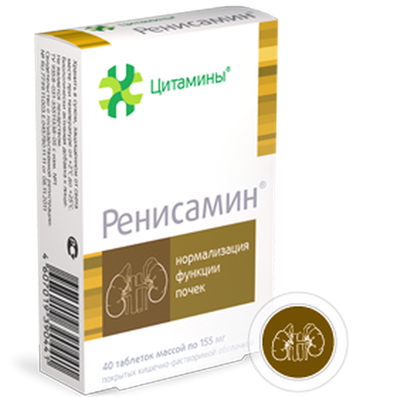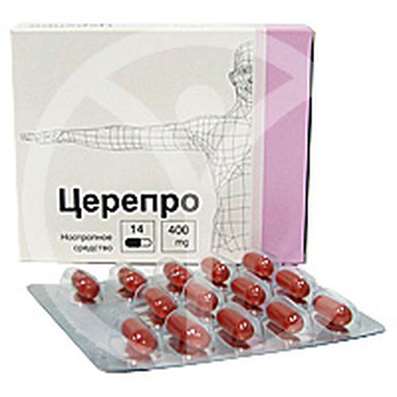Instruction for use: Amitriptyline-Grindex
I want this, give me price
Dosage form: film coated tablets
Active substance: Amitriptyline*
ATX
N06AA09 Amitriptyline
Pharmacological group:
Antidepressants
The nosological classification (ICD-10)
F32 Depressive episode: Adynamic subdepression; Astheno-adynamic subdepressive states; Asthenodepressive disorder; Astheno-depressive disorder; Asthenodepressive state; Astheno-depressive state; Major Depressive Disorder; Vyaloapatichesky depression with retardation; Double depression; Depressive pseudodement; Depressive illness; Depressive mood disorder; Depressive disorder; Depressive mood disorder; Depressive state; Depressive disorders; Depressive syndrome; Depressive syndrome larviated; Depressive syndrome with psychoses; Depressed masks; Depression; Depression Depletion; Depression with the phenomena of inhibition within the framework of cyclothymia; Depression is smiling; Involutional depression; Involutionary melancholy; Involutional depression; Manic-depressive disorder; Masked Depression; Melancholic Attack; Neurotic depression; Neurotic depression; Shallow Depression; Organic depression; Organic depressive syndrome; Simple depression; Simple melancholic syndrome; Psychogenic depression; Reactive depression; Reactive depression with moderate psychopathological symptoms; Reactive depressive states; Reactive depression; Recurrent depression; Seasonal depressive syndrome; Severostatic depression; Senile Depression; Senile Depression; Symptomatic Depression; Somatogenic depression; Cyclotymic depression; Exogenous Depression; Endogenous depression; Endogenous Depressive Conditions; Endogenous Depression; Endogenous depressive syndrome
F40.8 Other phobic anxiety disorders: Acrophobia
F50.0 Anorexia nervosa: Anorexia nervosa syndrome; Anorexia nervosa; Anorexia nervously-psychical; Cachexia nervy; Psychogenic anorexia
F50.2 Nervous Bulimia: Bulimic Neurosis; Bulimia; Wolf hunger; Kinorexia
F92 Mixed behavioral and emotional disorders
F98.0 Enuresis of inorganic nature: Urinary incontinence; Incontinence of non-hormonal etiology; Incontinence of inorganic etiology; Functional enuresis in children; Children's enuresis
G43 Migraine: Pain with migraine; Migraine; Hemiplegic migraine; Migraine-like headache; A migraine attack; Serial headache; Hemikraniya
Composition and release form
1 tablet contains amitriptyline (as hydrochloride) 10 or 25 mg; in blistere 10 pcs., in a cardboard bundle 5 blisters.
Pharmachologic effect
Mode of action - antidepressant, antidisuric, sedative.
Inhibits the reverse capture of catecholamines (noradrenaline, dopamine, serotonin) in the central nervous system, blocks muscarinic cholinergic receptors in the central nervous system and periphery, and has other anti-mediator properties (including H1-antihistamine).
Pharmacokinetics
When administered, its bioavailability is 33-62%, Cmax in the blood plasma is reached after 4-8 hours. It is metabolized in the liver with the formation of the active metabolite nortriptyline. The therapeutic concentrations in the blood for amitriptyline and nortriptyline are 120-240 ng / ml. Excretion, mainly, renal. Complete excretion takes place within 7 days. T1 / 2 amitriptyline 10-28 h, nortriptyline 16-80 h. Amitriptyline passes through the placental barrier, penetrates into breast milk, creating concentrations similar to plasma.
Indications of Amitriptyline-Grindex
Depression (especially effective in anxiety-depressive states), mixed emotional disorders and behavioral disorders, phobic disorders, children's enuresis (except for children with hypotonic urinary bladder), psychogenic anorexia, bulimic neurosis, severe neurogenic pain, migraine prevention.
Contraindications
Hypersensitivity, toxic CNS depression, decompensated heart disease, acute and recovery period of myocardial infarction, cardiac muscle conduction disorder, grade III hypertension, acute liver and kidney diseases, blood diseases, gastric and duodenal ulcer in the acute stage, glaucoma, hypertrophy of the prostate glands, atony of the bladder, pyloric stenosis, paralytic ileus, joint use with MAO inhibitors, pregnancy, breast-feeding, children's age till 6 years.
Application in pregnancy and lactation
Contraindicated in pregnancy. For the duration of treatment, breast-feeding should be discontinued.
Side effects
From the nervous system and sensory organs: disruption of accommodation, increased intraocular pressure, drowsiness.
From the cardiovascular system and blood (hematopoiesis, hemostasis): tachycardia, arrhythmia, orthostatic arterial hypertension, changes in blood picture, incl. agranulocytosis.
On the part of the intestinal tract: stomatitis, a taste disorder, anorexia, nausea, vomiting, a feeling of discomfort in the epigastrium, dry mouth, stool retention, intestinal obstruction, impaired liver function (rarely).
Other: skin rash, hair loss, lymphadenopathy, fever, gynecomastia, galactorrhea, changes in ADH secretion, decreased libido, potency, weight gain with prolonged use, delayed urination.
Interaction
Neuroleptics, sedatives and hypnotics, anticonvulsant drugs, central and narcotic analgesics, means for anesthesia, alcohol potentiate the depressing effect on the central nervous system. Strengthens the hypertensive effect of catecholamines, blocks the antihypertensive effect of guanethidine and drugs with a similar mechanism of action. Cimetidine increases the concentration of amitriptyline in plasma.
The combination with neuroleptics and / or anticholinergic drugs can cause a febrile temperature reaction, paralytic intestinal obstruction.
Dosing and Administration
Inside, during or after a meal. The initial daily dose is 50-75 mg (25 mg in 2-3 doses), if necessary, gradually increase the dose (by 25-50 mg) to the optimal dose - 150-200 mg / day (most of the daily dose taken before bedtime).
For severe depressions resistant to therapy: 300 mg or more, up to the maximum tolerated dose. (The maximum dose for outpatients is 150 mg / day). After achieving a persistent antidepressant effect after 2-4 weeks, the dose is gradually reduced (in case of signs of depression, it is necessary to return to the previous dose).
For mild disorders, in outpatient practice: elderly patients - 25-50 mg, a maximum of 100 mg in divided doses or once before bedtime.
Enuresis: children over 6 years of age - 12.5-25 mg at bedtime (but not more than 2.5 mg / kg).
For the prevention of migraine, with chronic pain of a neurogenic nature (including long-term headaches): from 12.5-25 mg to 100 mg / day.
Overdose
Symptoms: drowsiness, disorientation, confusion, dilated pupils, fever, dyspnea, dysarthria, agitation, hallucinations, convulsive seizures, muscle stiffness, stupor, coma, vomiting, arrhythmia, arterial hypotension, heart failure, respiratory depression.
Treatment: discontinuation of therapy, gastric lavage, infusion of fluid, IM or IV injection of physostigmine 1-3 mg every 0.5-2 hours (for children, physostigmine is started at a dose of 0.5 mg, then the dose is repeated with a 5-minute interval for determining the minimum effective dose, but not more than 2 mg). Physostigmine should be used only with coma, respiratory depression and other serious disorders; symptomatic therapy, maintenance of blood pressure and water-electrolyte balance. Monitoring of cardiovascular activity (ECG) for 5 days is shown, since relapse can occur after 48 hours and later.
Precautionary measures
Simultaneous reception with MAO inhibitors can lead to death. A break in treatment between taking MAO inhibitors and amitriptyline (and other tricyclic antidepressants) should be at least 14 days.
Amitriptyline at a dose above 150 mg / day reduces the threshold of convulsive activity, so the risk of convulsive seizures in patients with those in the history increases.
For the period of treatment it is forbidden to drive vehicles, service mechanisms and other types of work that require increased attention.
Treatment of elderly patients should be carefully monitored by applying minimal doses of the drug, increasing them gradually.
A transition from the depressive phase of manic-depressive psychosis to a manic stage is possible.
If the patient's condition does not improve within 3-4 weeks, further therapy is not practical.
Storage conditions of the drug Amitriptyline-Grindex
In a dry, the dark place at a temperature of no higher than 25 ° C.
Keep out of the reach of children.
Shelf life of the drug Amitriptyline-Grindex
film-coated tablets 10 mg - 4 years.
film-coated tablets 25 mg - 4 years.
Coated tablets 10 mg - 3 years.
Coated tablets 25 mg - 3 years.
Do not use after the expiry date printed on the package.

 Cart
Cart





